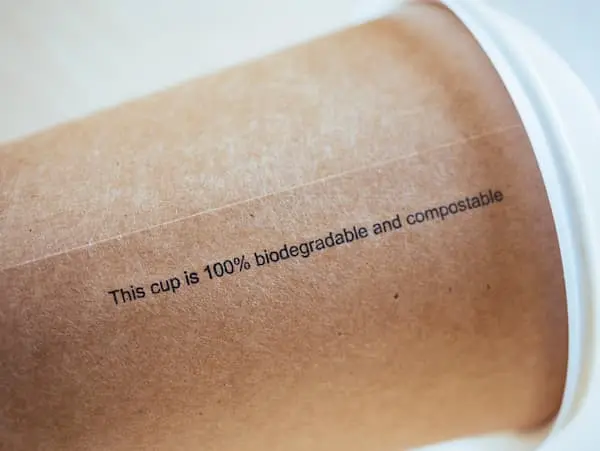Biodegradable vs. Compostable Packaging: What’s the Difference?
With discussions about sustainable products and packaging material options, you will often hear two words: compostable and biodegradable. Brands often find themselves choosing between these two packaging solutions.
From the consumers’ perspective, not many understand the difference between products labeled “compostable” or “biodegradable.” The confusion around these terms can be challenging to discern. If you see used plastics labeled with either of them, would you think they go in the recycling bin or the trash can?
There is a distinction between biodegradable and compostable despite people often using the two terms interchangeably. Below is a primer that examines the subtle difference between compostable and biodegradable packaging to educate consumers about sustainable packaging and recycling best practices.
What is Biodegradable Packaging?
Biodegradable packaging materials are designed to break down into harmless compounds over time. However, the breakdown rate differs depending on the kind of biodegradable material and how much gets processed. These objects disintegrate due to naturally occurring microorganisms and turn into organic matter.
Plant-based or natural mineral-based product packaging is biodegradable. Biodegradable packaging comes in papers, boxes, bags, and other objects constructed to degrade slowly and take anywhere from several days to years to disintegrate. For example, it takes two to five months for a paper to biodegrade and six months for a cotton T-shirt.
Biodegradables further reduce their environmental impact when disposed of correctly in waste management facilities. These facilities regulate the breakdown of biodegradable materials at the right temperature, light, moisture, and air levels.
Consumers can reuse biodegradable packaging before disposing of them. For instance, consumers can reuse the folding cartons or corrugated boxes that come with skincare products as an organizer or storage or as packaging for personal parcel deliveries.
What is Compostable Packaging?
Packaging labeled as compostable will break down into carbon dioxide, water, and inorganic elements without leaving any toxic residue. However, to convert them into compost, the waste must be processed. This usually happens by sending the packaging to an industrial composting facility. Once it goes into the compost pile and has completely broken down, compostable objects provide the soil with valuable nutrients.
Compostable packaging materials, such as starch-based packing peanuts (an alternative to Styrofoam), are often disintegrated into water and added to compost piles for proper disposal.
Not all compostable packaging breaks down naturally in a landfill. The materials should be in the proper condition (i.e., temperature, moisture, and other factors) to break down, which generally means bringing them to a commercial or industrial composting center to turn into compost.
The composting process involves heat, humidity, and microorganisms to decompose the material and turn them into biomass, water, and other inorganic substances. There are some cases where the composting process can be done at home. Compostable packaging, such as paper-based or wood-based containers, can go in a home compost pile if the label indicates.
Some new companies have created at-home, indoor composting machines. FoodCycler is one such company. These types of machines create a compost-like fertilizer, but might not be able to process all types of compostable packaging.
The key to managing compostable materials is a proper waste management system to separate the compostable from other types of packaging.
The Difference Between Biodegradable Packaging and Compostable Packaging
The main difference between compostable and biodegradable packaging is that all compostable materials are biodegradable, but not all biodegradable materials are compostable. While biodegradable materials return to nature eventually, they sometimes leave metal residue and do not benefit the soil. Even so, biodegradable materials take up less space in landfills.
Take note that compostable is not the same as recyclable. Compostable and biodegradable packaging materials have a timeframe to break down, while recyclable materials often do not have a timeline. The process of disintegration for both biodegradable and compostable objects is faster when put under the right conditions.
Eco-friendly packaging substitutes, including compostables and biodegradables, are viable options for non-recoverable plastic waste and packaging that cannot be reused, eliminated, or recycled. Both packaging types share one goal: to return to nature. How consumers plan to dispose of either of the two makes the real difference. Encourage your consumers to read the labels before sorting their waste.
Better Packaging Options are Out There
When discussing the better option between the two, the answer depends on the ease of use. Compostable waste needs to be brought to the proper facilities, which may be more suited to eco-conscious users. When choosing biodegradable packaging, it is best to select materials with less time for biodegradation.
Ultimately, the fact that you are more mindful and committed to observing green practices is good for the environment.
In the age of sustainability awareness and innovation, it is safe to speculate that more businesses will transition towards environmentally-friendly practices. To learn how your business can start implementing eco-friendly packaging, reach out to the experts from Meyers Printing for professional printing solutions that fit your needs. It is time to bring your sustainable vision to life.

